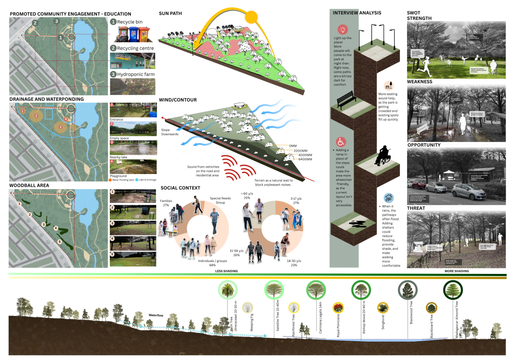Project 1A
Design for Community - Group ( 20% )
This semester, we will design a Creative and Recreational Hub within Taman Wawasan Recreational Park, working across two designated sites: the North and South Sites. Surrounded by residential and commercial areas, we are required to analyse the context, understand community needs, and integrate these insights into our design solutions for Projects 1B and 1C.
We are required to conduct site visits in our assigned groups to examine the physical and intangible qualities of the site and engage with its users to understand their needs. Based on these findings, we will develop a design response that will guide our approach for Project 1B and 1C.
Task A: Data Collection
We are required to work in assigned Task Groups, each consisting of members from different tutorial groups, to collect and analyse site data for Projects 1B and 1C.
FULL PDF VERSION:
Task B: Site Analysis
We are required to use SWOT analysis during the site analysis process. This will help us identify the site's potentials and challenges. The findings will inform our design narratives by addressing the environmental qualities and contextual needs of the site.
Task C: Design Response
We are required to develop a Manifesto based on our site analysis to guide the design for Projects 1B and 1C. It should outline the design theme, proposed programs and spaces, target users, and suitable locations for both structures. The response must also address community needs, connectivity, accessibility (including for persons with disabilities), and sustainable strategies for long-term resilience.
Reflection
TGC 3.1 Think critically and creatively
Through this project, I learned the importance of thinking critically and creatively when identifying and analysing the environmental qualities and contextual needs of a site. Observing the site’s natural elements, user patterns, and surrounding conditions pushed me to go beyond surface-level observations and consider how each factor influences the design. By applying sustainable strategies, I was challenged to creatively balance functionality with environmental sensitivity, ensuring that my design not only meets community needs but also respects and responds to the natural context.
TGC 3.2 Define and analyse problems to arrive at effective solutions
Through this project, I learned how to define and analyse site-specific challenges by closely observing the natural and built context. By considering elements like sunlight, wind flow, vegetation, and surrounding structures, I was able to make informed design decisions that respond sensitively to the environment. Designing with environmental poetics in mind helped me create spaces that not only solve functional problems but also enhance the user’s emotional and sensory experience. This process taught me that thoughtful solutions often emerge from a deep understanding of the site.




